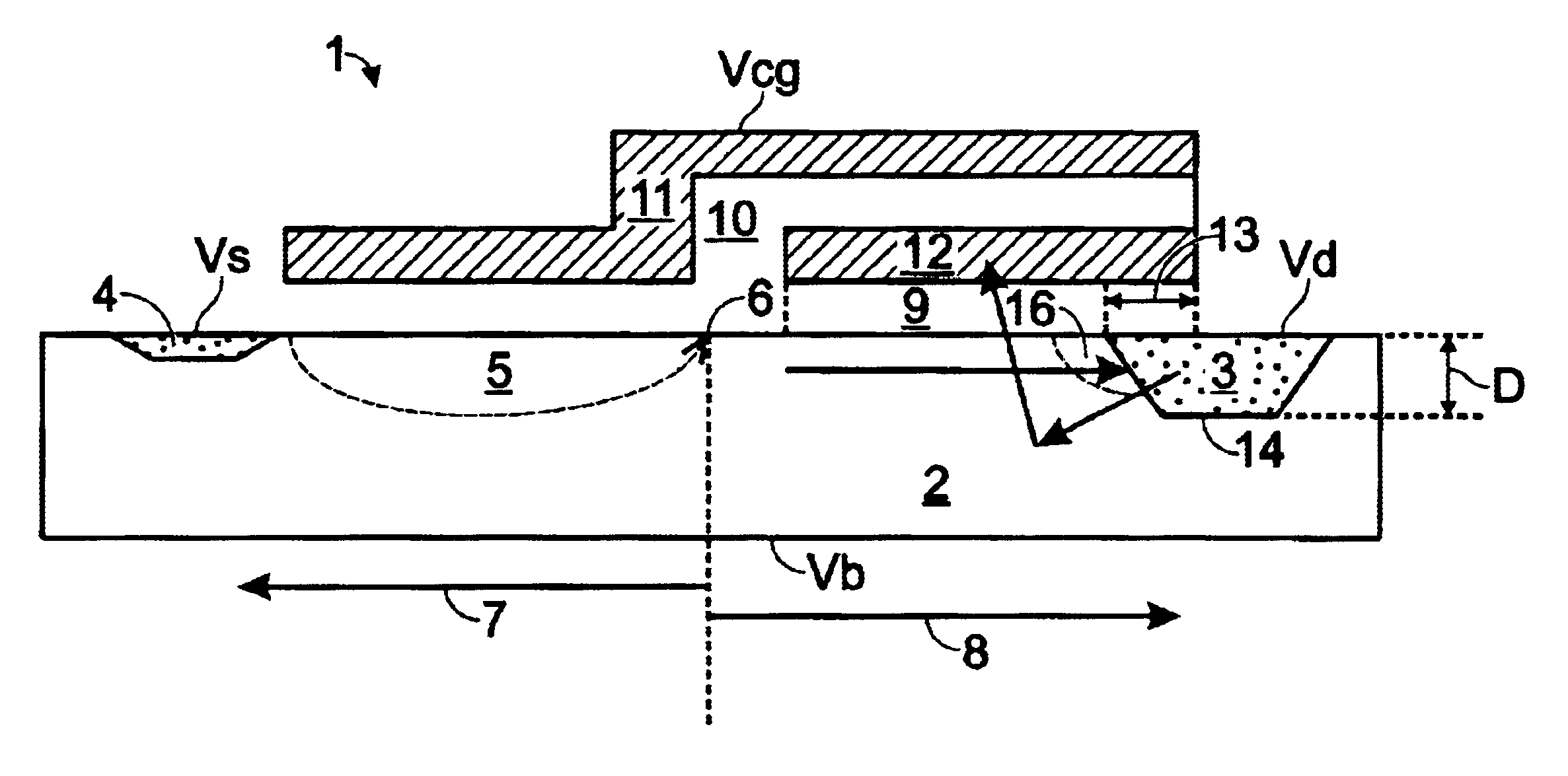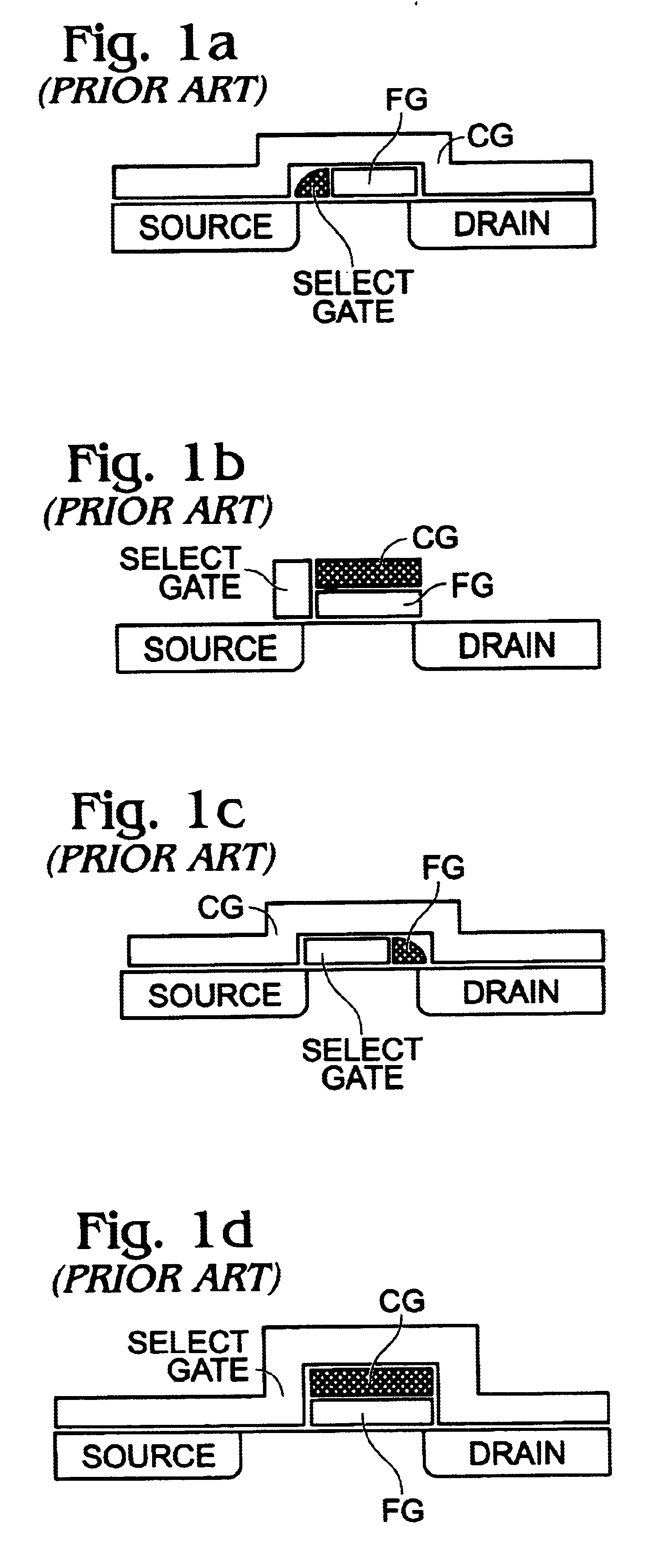Non-volatile electrically alterable semiconductor memory device
a semiconductor memory and non-volatile technology, applied in read-only memories, static storage, instruments, etc., can solve the problems of reducing the efficiency of hot electron injection in the channel, corresponding programming speed, and practically impossible to further scale the cell itself, etc., to achieve fast programming capabilities, high density memory, and low voltage
- Summary
- Abstract
- Description
- Claims
- Application Information
AI Technical Summary
Benefits of technology
Problems solved by technology
Method used
Image
Examples
Embodiment Construction
Referring to the drawings, FIG. 3 is a block diagram illustrating a device arranged to employ exemplary embodiments of the present invention. As shown in FIG. 3, the device comprises a transistor 1 having a substrate 2 provided with a drain 3, a source 4, and a channel region 5 extending between the source 4 and the drain 3. The substrate 2 has a split point 6 between the source 4 and the drain 3. The split point 6 forms a separation between a first region 7 extending from the split point 6 in a first direction towards the source 4 and a second region 8 extending from the split point 6 in a second direction towards the drain 3. A first insulating layer 9 is applied on the substrate 2 and extends in the second region 8 over at least a portion of the drain 3 and at least a portion of the channel region 5. A second insulating layer 10 is applied on the substrate 2 in the first region 7, where it separates the substrate 2 from a control gate 11. The second insulating layer 10 extends fu...
PUM
 Login to View More
Login to View More Abstract
Description
Claims
Application Information
 Login to View More
Login to View More - R&D
- Intellectual Property
- Life Sciences
- Materials
- Tech Scout
- Unparalleled Data Quality
- Higher Quality Content
- 60% Fewer Hallucinations
Browse by: Latest US Patents, China's latest patents, Technical Efficacy Thesaurus, Application Domain, Technology Topic, Popular Technical Reports.
© 2025 PatSnap. All rights reserved.Legal|Privacy policy|Modern Slavery Act Transparency Statement|Sitemap|About US| Contact US: help@patsnap.com



